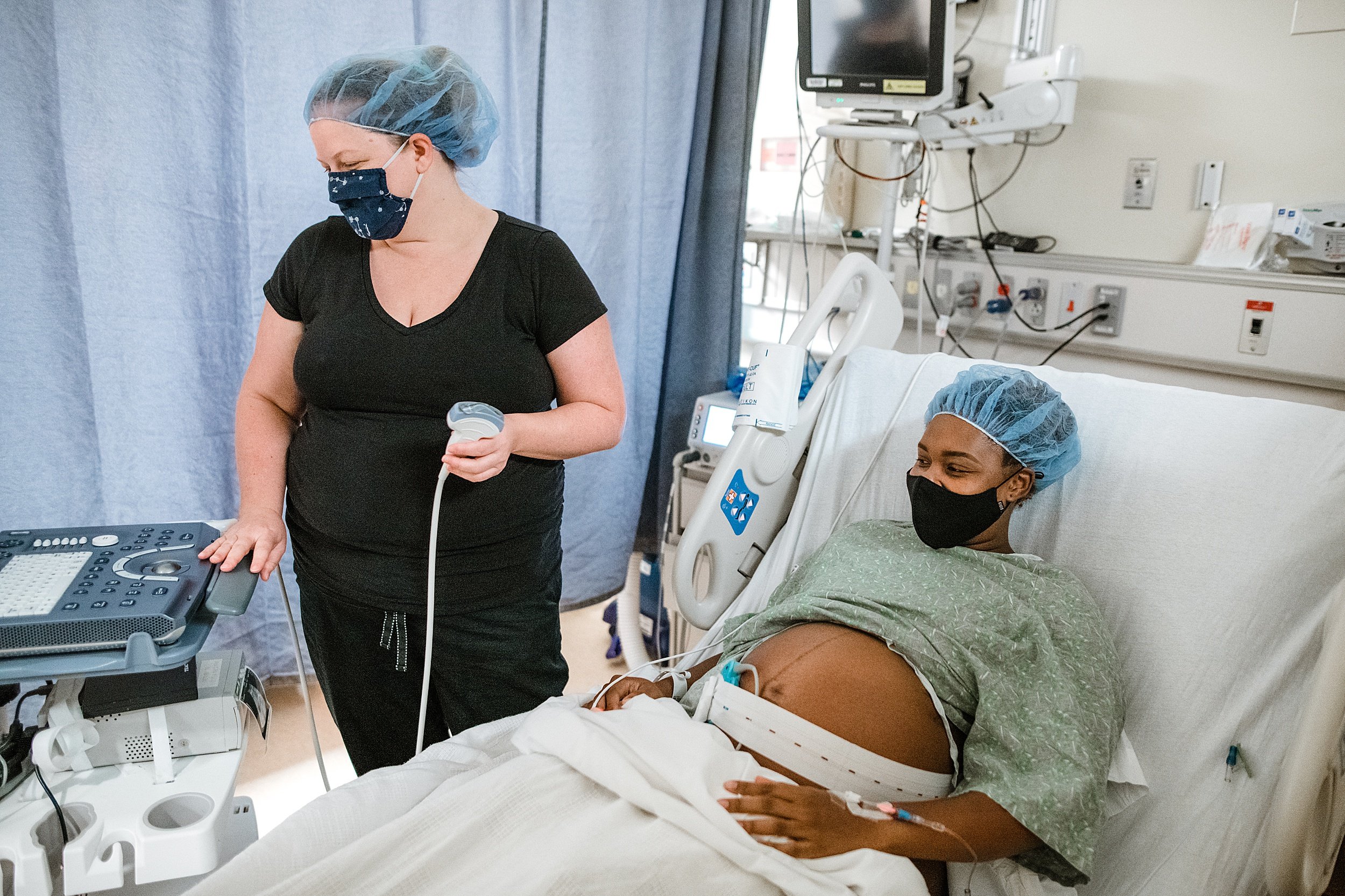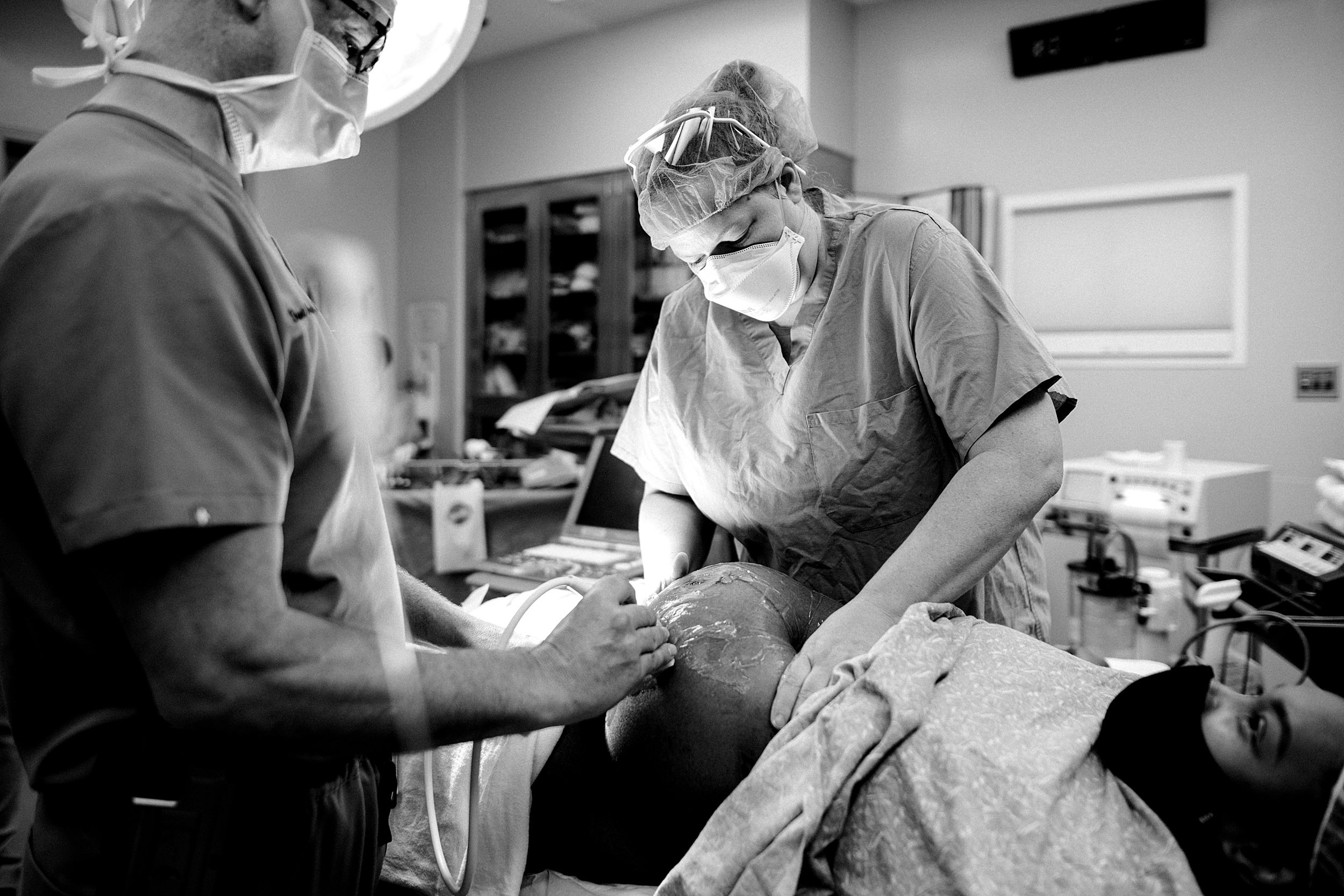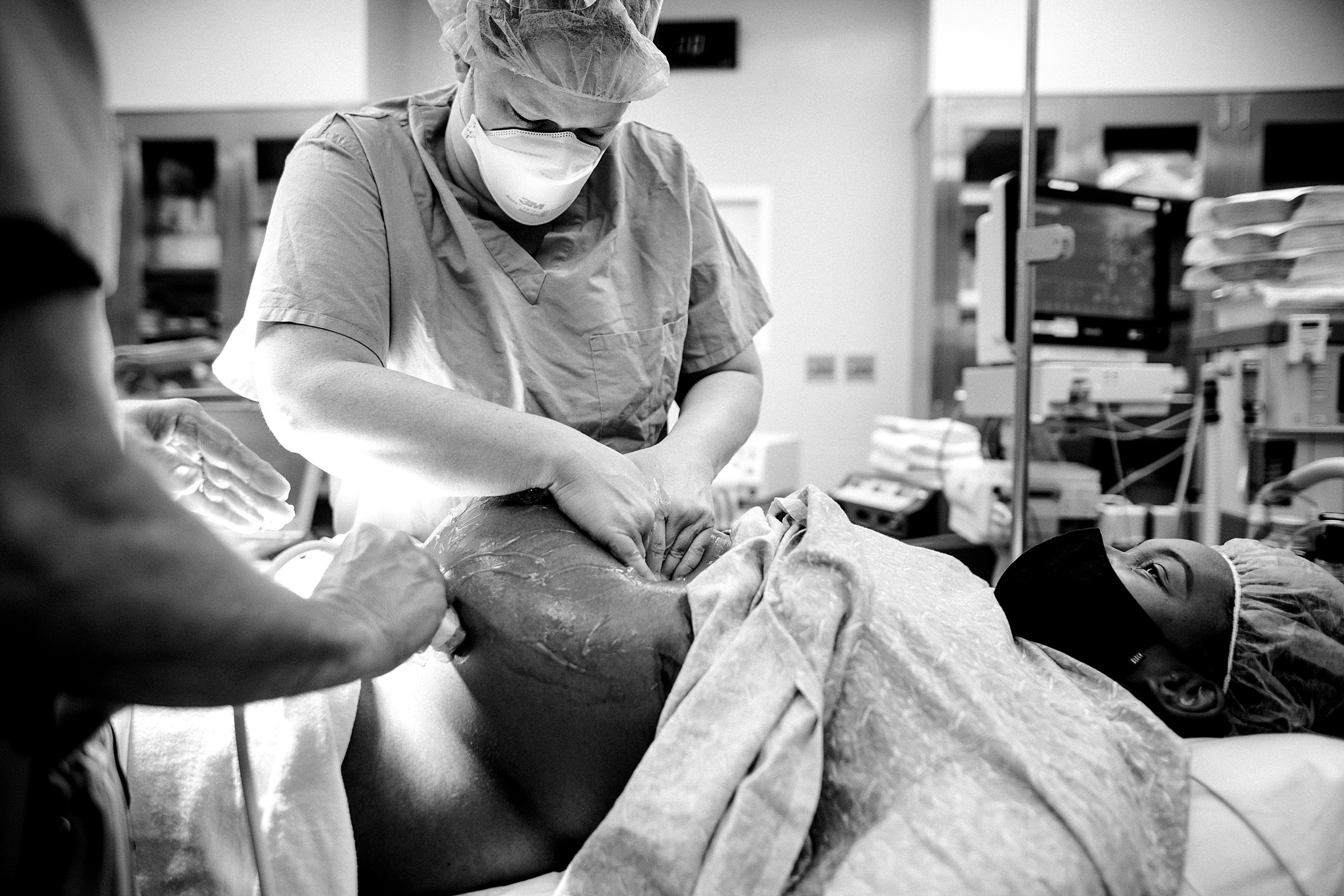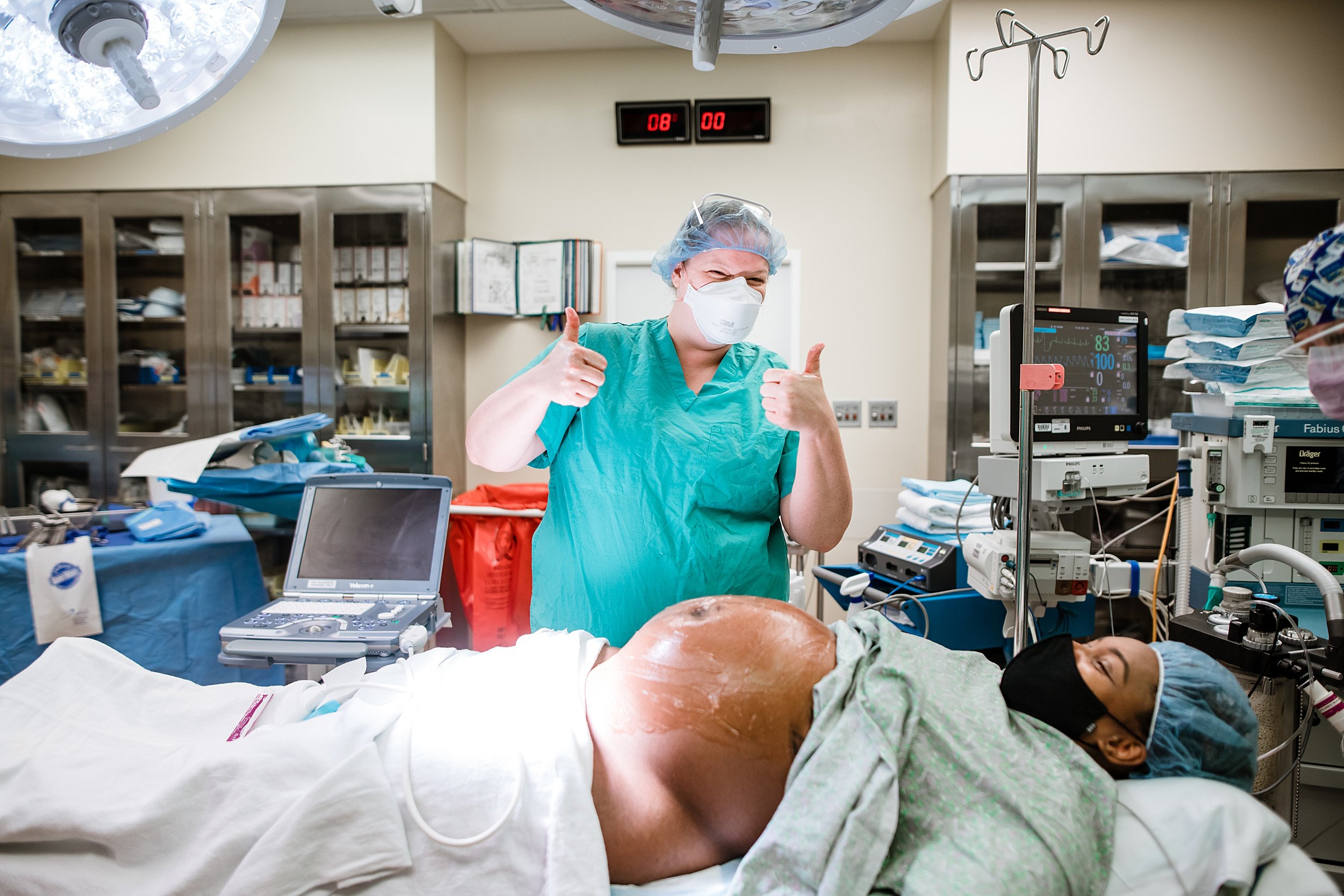Turning a Breech Baby: External Cephalic Version | Pensacola Birth Photographer
As Shawana’s birth photographers, I was invited to attend her ECV procedure at Sacred Heart Hospital in Pensacola, just in case something went wrong and her baby had to be delivered right away. This is a fairly rare opportunity, so I am excited to share this peek behind the curtain.
External cephalic version (ECV) is a medical procedure designed to turn a baby from a breech position (feet or buttocks first) to a cephalic position (head down), ideally setting the stage for a vaginal delivery. Typically performed between 36 and 38 weeks of gestation, ECV can reduce the likelihood of cesarean delivery, offering a safer and more natural birth option for many patients.
Understanding the Purpose of ECV
When a baby is in a breech position at term, vaginal delivery can carry significant risks, including cord prolapse, head entrapment, and delivery trauma. Turning the baby to a head-down position through ECV significantly improves the chances of a vaginal delivery and reduces complications. Additionally, avoiding a cesarean delivery can lead to quicker recovery times, fewer surgical risks, and fewer complications in future pregnancies, making ECV an appealing option for many families.
The Process: What to Expect During ECV
An ECV procedure involves careful preparation, precise execution, and thorough follow-up to ensure both the baby's and mother's safety. Here is a step-by-step look at how the procedure unfolds:
Before the Procedure:
The process begins with an ultrasound to confirm the baby’s position, assess the amniotic fluid levels, and determine the location of the placenta. These factors are critical in evaluating whether the procedure is likely to succeed. Fetal heart rate and maternal vital signs are closely monitored to establish a safe baseline.
To relax the uterus, medications such as terbutaline are often administered. In many cases, an epidural is also placed to manage discomfort and as a precaution in the event an emergency c-section becomes necessary. These preparatory steps create optimal conditions for safety and efficacy.
During the Procedure:
The patient lies in a position that allows the healthcare provider to access the abdomen easily. Using firm but controlled pressure, the provider guides the baby’s head toward the pelvis while gently lifting the buttocks upward. Throughout this process, ultrasound guidance ensures precision and safety. The entire procedure typically lasts about 10 to 15 minutes, though it may take longer depending on the baby’s response.
After the Procedure:
Following the ECV, fetal heart rate monitoring continues to confirm the baby’s well-being. Some patients may experience mild cramping or soreness, but most are discharged the same day. If the ECV is unsuccessful, the healthcare team will discuss alternative birth options, including cesarean delivery.
Who Makes a Good Candidate for ECV?
Not all patients are suitable candidates for ECV. The best candidates include those with:
Singleton pregnancies (no twins or multiples).
A baby in a breech position after 36 weeks of gestation.
Sufficient amniotic fluid to allow the baby to move.
An unengaged baby (not settled deeply into the pelvis).
No significant uterine abnormalities, such as fibroids.
Normal placental placement and no major complications like severe hypertension.
When ECV Is Not Recommended
Certain conditions make ECV inadvisable due to increased risks. These include:
Placenta previa, where the placenta blocks the cervix.
A history of uterine rupture or extensive uterine surgery.
Significant uterine malformations, such as a bicornuate uterus.
Low levels of amniotic fluid (oligohydramnios).
Active vaginal bleeding or fetal growth restrictions.
Non-reassuring fetal heart rate patterns.
Multiple gestation pregnancies.
Risks and Potential Side Effects
While ECV is generally safe, it does carry some risks. These may include:
Temporary changes in the baby’s heart rate.
Premature rupture of membranes.
Placental abruption.
Rarely, uterine rupture.
Preterm labor or discomfort during the procedure.
Failure to turn the baby successfully, which may still necessitate a cesarean delivery.
To mitigate risks, this procedure should be attempted in an operating room to allow for an emergency cesarean delivery should anything go wrong.
Success Rates and Factors That Influence Outcomes
The success rate for ECV generally falls between 50% and 60%. Several factors can influence these outcomes, including whether the patient has had previous pregnancies, the baby’s position, and the amount of amniotic fluid present. Women who have given birth before often have higher success rates, as their uteruses may be more accommodating.
Shawana was a great candidate and her baby turned so quickly and easily that I nearly missed it! Unfortunately, while we were able to attempt a vaginal delivery, ultimately baby’s head did not make it into a good position and a c-section was necessary.
Deciding Whether to Undergo ECV
Choosing to undergo ECV is a deeply personal decision. Many patients opt for the procedure because it increases the likelihood of a vaginal delivery, minimizes surgical risks, and supports a quicker recovery. However, others may decline due to concerns about discomfort, potential risks, or a preference for a planned cesarean delivery.
It is crucial to weigh these factors alongside the advice of a trusted healthcare provider. For many, the potential benefits of ECV—avoiding a cesarean delivery and achieving a safer vaginal birth—outweigh the risks. However, each situation is unique, and the best choice is one that aligns with the patient’s medical circumstances and personal preferences.
External cephalic version is a valuable procedure for turning breech babies and increasing the chances of a successful vaginal delivery. While it carries some risks, ECV offers many benefits that make it worth considering for eligible patients. The decision to proceed with ECV should always be informed by a thorough discussion with a healthcare provider, ensuring that patients feel confident and supported in their choice.
Personally, though my provider was experienced and pretty confident my breech baby would turn, I declined ECV. Not only did I have a large fibroid, I also had a bicornuate uterus and uncontrolled pregnancy induced hypertension. I was uncomfortable with the risks and had always had a feeling I would prefer a c-section anyway. Turns out I was right and my scheduled c-section was my least painful recovery. My son did have to spend a couple of day in the NICU for excess fluid in his lungs, which was emotionally difficult, but ultimately I’m content with my decision not to try for a vaginal delivery.
What do you think? Would you be determined to give ECV a shot or would you rather just have a scheduled c-section?












